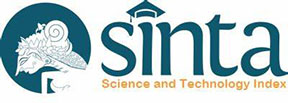Cellulolytic Bacteria Degradation DNA Isolation from Acid Soil Molecularly
DOI:
https://doi.org/10.32734/jopt.v7i1.3826Keywords:
DNA Isolation, Molecular, BlastAbstract
AbstractCellulolytic degradation bacteria are microorganisms that are abundant in nature which can break down raw fibers of organic waste into compost. The purpose of this study was to obtain superior cellulolytic bacteria to degrade organic waste into compost and obtain permanent species and strain. The method used is DNA isolation by culturing bacteria with Luria Bertani (LB) media, quality and quantity analysis using DNA electrophoresis isolation technique visualized by electrophoresis technique followed by testing with Polymerase Chain Reaction (PCR) technique. Isolated DNA was amplified using a primer combination designed from the 16S rRNA gene sequence. The primary combinations used are 27F (5 '-AGAGTTTGATCMTGGCTCAG-3') and 1525R (5 '-AAGGAGGTGWTCC-ARCC-3'). Analysis of sequence data is compared with gene sequences that have been deposited into the public database in silico using the BLAST program conducted online on the NCBI website (National Center of Biotechnology Information). The results obtained by visualization of electrophoresis from isolation of DNA 6 isolates of cellulolytic bacteria M = λ DNA 50 ng / µl; 1 = KM25, 2 = SR75, 3 = JM, 4 = U6,5 = G8,6 = K13. DNA concentrations obtained from 6 isolates were quite high, ranging from 34.4 to 69.9 ng / µL. The results of the 6th PCR amplification were 6 isolates namely KM25, SR75, JM, G-8, KM13, AND U-6. In general, the six selected cellulolytic bacterial isolates belong to the genus Bacillus. Phylogenetic analysis using Boostrap 1000 x. The six selected bacterial isolates analyzed separated and formed two main clusters: the first cluster which included Bacillus thuringensis and Bacillus cereus and the Bacillus Subtilis cluster. The conclusion of the 6 isolates sequencing was KM13 (Bacillus thuringensis), G8 (Bacillus cereus), Sr75 (Bacillus cereus), JM (Bacillus subtilis), KM25 (Bacillus subtilis), U6 (Bacillus subtilis).
Â
REFERENCES
Afriani, A., Heviyanti, M. and syawal Harahap, F., 2019. Effectiveness of gliocladium virens in controlling Fusarium oxysporum F. sp. capsici disease on chili plant. Jurnal Pertanian Tropik (Indonesian Tropical Agriculture Journal) accredited by KEMENRISTEK DIKTI No: 21/E/KPT/2018, 6(3, Dec), pp.403-411.
Ariwibawa, Nugraha 2004. Erodibilitas Tanah Di Kecamatan Jogorogo Kabupaten Ngawi Propinsi Jawa Timur. Skripsi. Surakarta : Fakultas Geografi UMS
Feliatra. 2004. Isolasi dan Identifikasi Bakteri Probiotik dari Ikan Kerapu
Â
Macan (Ephinephelus fuscogatus) dalam Upaya Efisiensi Pakan Ikan. Jurnal Natur Indonesia. 6 (2): 74-81.
Hazar, M., Salim, M., dan Mardiah, E. 2015. Keberadaan Escherichia Coli Resistan Antibiotik Pada Ikan Balang (Pristolepis Fasciata) Di Sungai Batang Arau Jurusan Kimia, Fakultas MIPA, Universitas Andalas Limau Manis, Padang.
Hidayat P, Aidawati N, Hidayat SH, Sartiami D. 2008. Tanaman indikator dan teknik RAPDPCR untuk penentuan biotipe Bemisia tabaci (Gennadius) (Hemiptera: Aleyrodidae). Jurnal Hama dan Penyakit Tumbuhan Tropika 8:1–7.
Huda, B.I. 2010. Koleksi dan Identifikasi Bakteri Selulolitik dari Kawah Gunung Merapi Berdasarkan Analisis Sekuens Gen Pengkode 16S-rRNA. Skripsi Fakultas Pertanian Unand. 16 Halaman
Jamsari. 2007. Bioteknologi Pemula. Prinsip Dasar dan Aplikasi Analisis Molekuler. Unri Press.Halaman 46-48.
Reese, E.T., R.G.H. Siu, and H. S. Levinson. 1972. in : W. M. Fogarty (ed). 1983 Microbial Enzymes and Biotechnology. Ap plied Science Publ., London.soil as a potential candidate of organic waste degradation
Samah E. dan Misdawati. 2019. Isolation of Cellulose Degradation Bacteria (CDB) from acid soil. Jurnal Tropika USU. Vol.6.No3. ISSN NO: 2356- 4725/p- ISSN : 2655-757. https://talenta.usu.ac.id/jpt.
 Sambrook, J.  Fritsch, E. F.;  Maniatis, T. 1989. Molecular cloning: a laboratory manual. Tex Book No.Ed. 2 pp.xxxviii + 1546 pp
Suryanto, Dwi. 2009. Prospek Keanekaragaman Hayati.
Tallei, T.E., Rembet, R.E., Pelealu, J.J., Kolondam, B.J. 2016. Sequence Variation and Phylogenetic Analysis of Sansevieria trifasciata (Asparagaceae). Bioscience Research 13(1): 01-07.
Trisnawati E, Andesti D, Saleh A. 2013 Pembuatan Kitosan Dari Limbah Cangkang Kepiting Sebagai Bahan Pengawet Buah Duku Dengan Variasi Lama Pengawetanâ€, Jurnal Teknik Kimia No. 2, Vol. 19,
Walida, H., Harahap, F.S., Hasibuan, M. and Yanti, F.F., 2019. Isolasi dan Identifikasi Bakteri Penghasil IAA dan Pelarut Fosfat dari Rhizosfer Tanaman Kelapa Sawit. BIOLINK (Jurnal Biologi Lingkungan Industri Kesehatan), 6(1), pp.1-7.
Weisberg, S.P. McCann D, Desai M.Rosenbaum M, Leibel RL, Ferrante AW (2003). Obesity is associated with macrophage accumulation in adipose tissue.J Clin. Invest 112, 1796–1808..\
Wowrik B, Kerkhof L, Zylstra GJ, Kukor JJ. 2005. Identification of unique type II Polyketide synthase gene is soil. Appl Environ Microbiol. 71(5):2232-2238. doi: 10.1128/ AEM.71.5.2232-2238.2005.
Yusuf, S. 2000. Bakteri serasah yang terdapat di hutan gambut ditinjau dari segi daerah tertutup dan terbuka. Skripsi Sarjana Biologi. FMIPA. Universitas Andalas. Padang
Downloads
References
Afriani, A., Heviyanti, M. and syawal Harahap, F., 2019. Effectiveness of gliocladium virens in controlling Fusarium oxysporum F. sp. capsici disease on chili plant. Jurnal Pertanian Tropik (Indonesian Tropical Agriculture Journal) accredited by KEMENRISTEK DIKTI No: 21/E/KPT/2018, 6(3, Dec), pp.403-411.
Ariwibawa, Nugraha 2004. Erodibilitas Tanah Di Kecamatan Jogorogo Kabupaten Ngawi Propinsi Jawa Timur. Skripsi. Surakarta : Fakultas Geografi UMS
Feliatra. 2004. Isolasi dan Identifikasi Bakteri Probiotik dari Ikan Kerapu
Macan (Ephinephelus fuscogatus) dalam Upaya Efisiensi Pakan Ikan. Jurnal Natur Indonesia. 6 (2): 74-81.
Hazar, M., Salim, M., dan Mardiah, E. 2015. Keberadaan Escherichia Coli Resistan Antibiotik Pada Ikan Balang (Pristolepis Fasciata) Di Sungai Batang Arau Jurusan Kimia, Fakultas MIPA, Universitas Andalas Limau Manis, Padang.
Hidayat P, Aidawati N, Hidayat SH, Sartiami D. 2008. Tanaman indikator dan teknik RAPDPCR untuk penentuan biotipe Bemisia tabaci (Gennadius) (Hemiptera: Aleyrodidae). Jurnal Hama dan Penyakit Tumbuhan Tropika 8:1–7.
Huda, B.I. 2010. Koleksi dan Identifikasi Bakteri Selulolitik dari Kawah Gunung Merapi Berdasarkan Analisis Sekuens Gen Pengkode 16S-rRNA. Skripsi Fakultas Pertanian Unand. 16 Halaman
Jamsari. 2007. Bioteknologi Pemula. Prinsip Dasar dan Aplikasi Analisis Molekuler. Unri Press.Halaman 46-48.
Reese, E.T., R.G.H. Siu, and H. S. Levinson. 1972. in : W. M. Fogarty (ed). 1983 Microbial Enzymes and Biotechnology. Ap plied Science Publ., London.soil as a potential candidate of organic waste degradation
Samah E. dan Misdawati. 2019. Isolation of Cellulose Degradation Bacteria (CDB) from acid soil. Jurnal Tropika USU. Vol.6.No3. ISSN NO: 2356- 4725/p- ISSN : 2655-757. https://talenta.usu.ac.id/jpt.
Sambrook, J. Fritsch, E. F.; Maniatis, T. 1989. Molecular cloning: a laboratory manual. Tex Book No.Ed. 2 pp.xxxviii + 1546 pp
Suryanto, Dwi. 2009. Prospek Keanekaragaman Hayati.
Tallei, T.E., Rembet, R.E., Pelealu, J.J., Kolondam, B.J. 2016. Sequence Variation and Phylogenetic Analysis of Sansevieria trifasciata (Asparagaceae). Bioscience Research 13(1): 01-07.
Trisnawati E, Andesti D, Saleh A. 2013 Pembuatan Kitosan Dari Limbah Cangkang Kepiting Sebagai Bahan Pengawet Buah Duku Dengan Variasi Lama Pengawetanâ€, Jurnal Teknik Kimia No. 2, Vol. 19,
Walida, H., Harahap, F.S., Hasibuan, M. and Yanti, F.F., 2019. Isolasi dan Identifikasi Bakteri Penghasil IAA dan Pelarut Fosfat dari Rhizosfer Tanaman Kelapa Sawit. BIOLINK (Jurnal Biologi Lingkungan Industri Kesehatan), 6(1), pp.1-7.
Weisberg, S.P. McCann D, Desai M.Rosenbaum M, Leibel RL, Ferrante AW (2003). Obesity is associated with macrophage accumulation in adipose tissue.J Clin. Invest 112, 1796–1808..
Wowrik B, Kerkhof L, Zylstra GJ, Kukor JJ. 2005. Identification of unique type II Polyketide synthase gene is soil. Appl Environ Microbiol. 71(5):2232-2238. doi: 10.1128/ AEM.71.5.2232-2238.2005.
Yusuf, S. 2000. Bakteri serasah yang terdapat di hutan gambut ditinjau dari segi daerah tertutup dan terbuka. Skripsi Sarjana Biologi. FMIPA. Universitas Andalas. Padang
Downloads
Published
How to Cite
Issue
Section
License
Copyright (c) 2020 Jurnal Pertanian Tropik

This work is licensed under a Creative Commons Attribution-ShareAlike 4.0 International License.






















